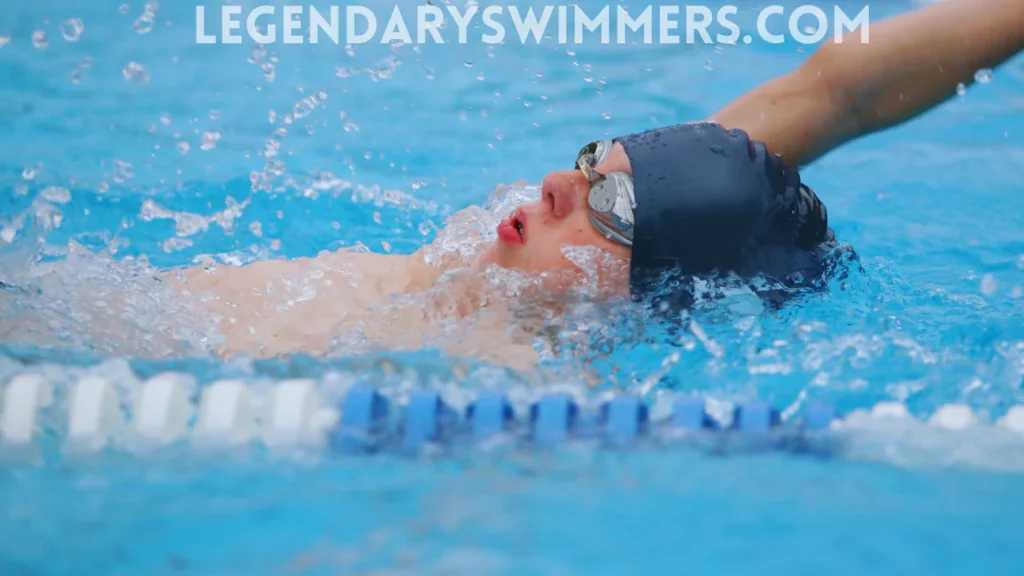Backstroke is a unique swimming stroke that demands a blend of balance, coordination, and efficiency. Swum on the back, it requires a strong connection between body position, arm movements, and kicking to glide smoothly through the water. Below, we outline essential techniques to refine your backstroke and boost performance.
1. Perfect Your Body Position
A streamlined body position is the foundation of an effective backstroke. Keep your body flat and aligned, with your head facing upward, as if resting on a pillow. Your hips should stay high, close to the water’s surface, to minimize drag. Avoid letting your hips sink, as this disrupts flow and slows you down. Engage your core to maintain a straight line from head to toes, allowing your body to move effortlessly.
2. Optimize Your Arm Movement
The arm stroke in backstroke is a continuous, alternating motion that propels you forward. Start with your arm extended behind your head, entering the water pinky-first for a smooth catch. Pull through the water in a controlled arc, keeping your elbow slightly bent to maximize power. As one arm pulls, the other recovers above the water, maintaining a steady rhythm. Focus on smooth transitions to avoid pausing, which can disrupt momentum.
3. Master the Catch and Pull
The catch phase is critical for generating propulsion. As your hand enters the water, angle it slightly downward to “catch” the water. Pull with a steady, even force, using your shoulder and back muscles to drive the motion. Avoid overextending or rushing the pull, as this reduces efficiency. A strong, consistent catch ensures maximum water resistance for forward movement.
4. Enhance Your Kick
The backstroke kick, often a flutter kick, provides stability and propulsion. Keep your legs straight but relaxed, with toes pointed to reduce drag. Kick from the hips, not the knees, to generate power without wasting energy. Aim for a rapid, compact kick—about 4-6 kicks per arm cycle—keeping your feet just below the surface to maintain streamline and avoid splashing.
5. Coordinate Breathing and Rhythm
Unlike other strokes, backstroke allows continuous breathing since your face is above water. However, timing is key. Inhale as one arm recovers and exhale as the other pulls to establish a natural rhythm. Avoid holding your breath, as this creates tension and disrupts flow. Practice syncing your breathing with your arm strokes to maintain a relaxed, efficient pace.
6. Improve Rotation and Core Engagement
Body rotation is essential for a powerful backstroke. Rotate your shoulders and hips slightly with each arm stroke to increase reach and reduce resistance. Engage your core to control this rotation, ensuring it’s smooth and not excessive. Proper rotation enhances arm pull efficiency and keeps your body aligned, minimizing drag.
7. Develop Head Position and Stability
Your head acts as the anchor for backstroke. Keep it still and centered, looking straight up or slightly toward your feet. Avoid turning your head to the side, as this misaligns your body and increases drag. A stable head position helps maintain balance and allows you to focus on arm and leg coordination.
8. Use Drills to Refine Technique
Incorporate drills to target specific aspects of your backstroke. For example, practice single-arm backstroke to focus on arm movement and catch technique. Try kicking with a board to isolate and strengthen your flutter kick. Swimming Drills like these help break down the stroke, allowing you to address weaknesses and build muscle memory.
9. Leverage Training Aids
Equipment like pull buoys, fins, and paddles can enhance your backstroke training. Pull buoys isolate your upper body, helping you focus on arm technique. Fins improve kick strength and propulsion, while paddles increase resistance to build arm power. Use these tools strategically to address specific areas of improvement.
10. Analyze and Adjust
Regularly evaluate your backstroke to identify areas for growth. Record your swims or seek feedback from a coach to spot inefficiencies in body position, arm pull, or kick. Small adjustments, like refining your catch or tightening your core, can lead to significant improvements over time.
Final Thoughts
Improving your backstroke requires patience, practice, and attention to detail. Focus on maintaining a streamlined body, coordinating arm and leg movements, and incorporating drills and feedback. With consistent effort, you’ll develop a smoother, faster, and more efficient backstroke that stands out in the pool.
All About Blakeyeo.com Celebrity News: Latest Scoop, Photos & Insider Access











































